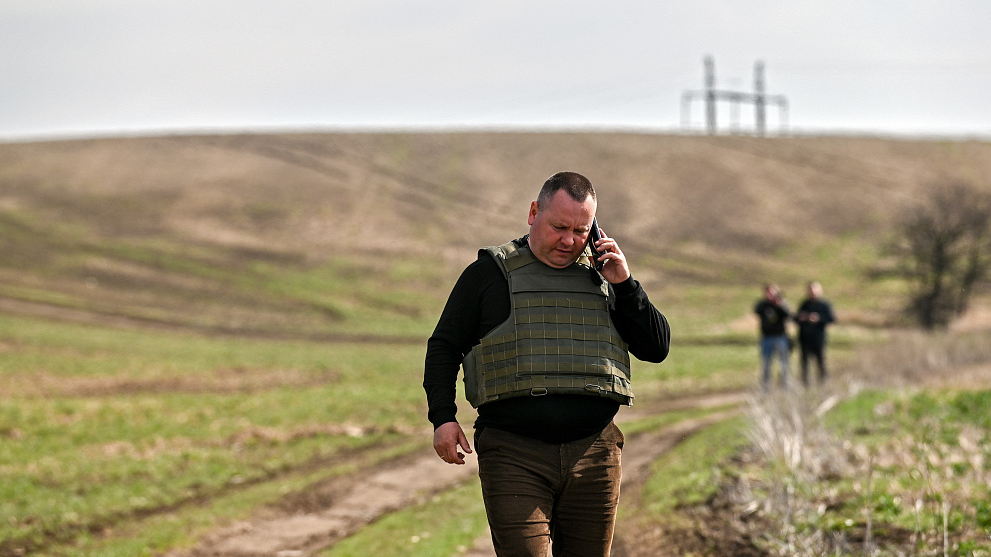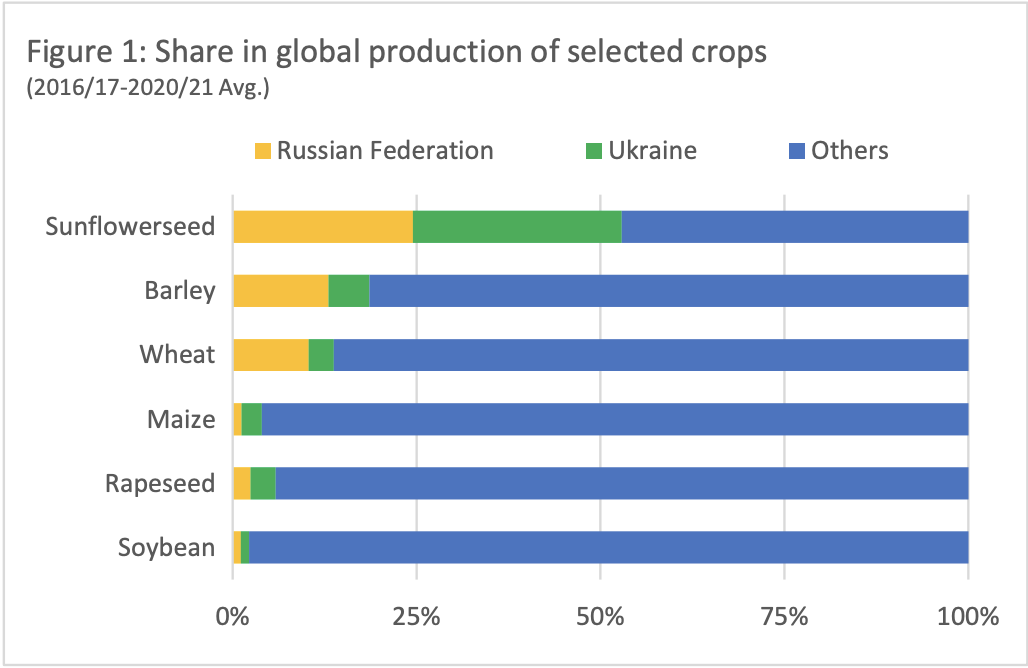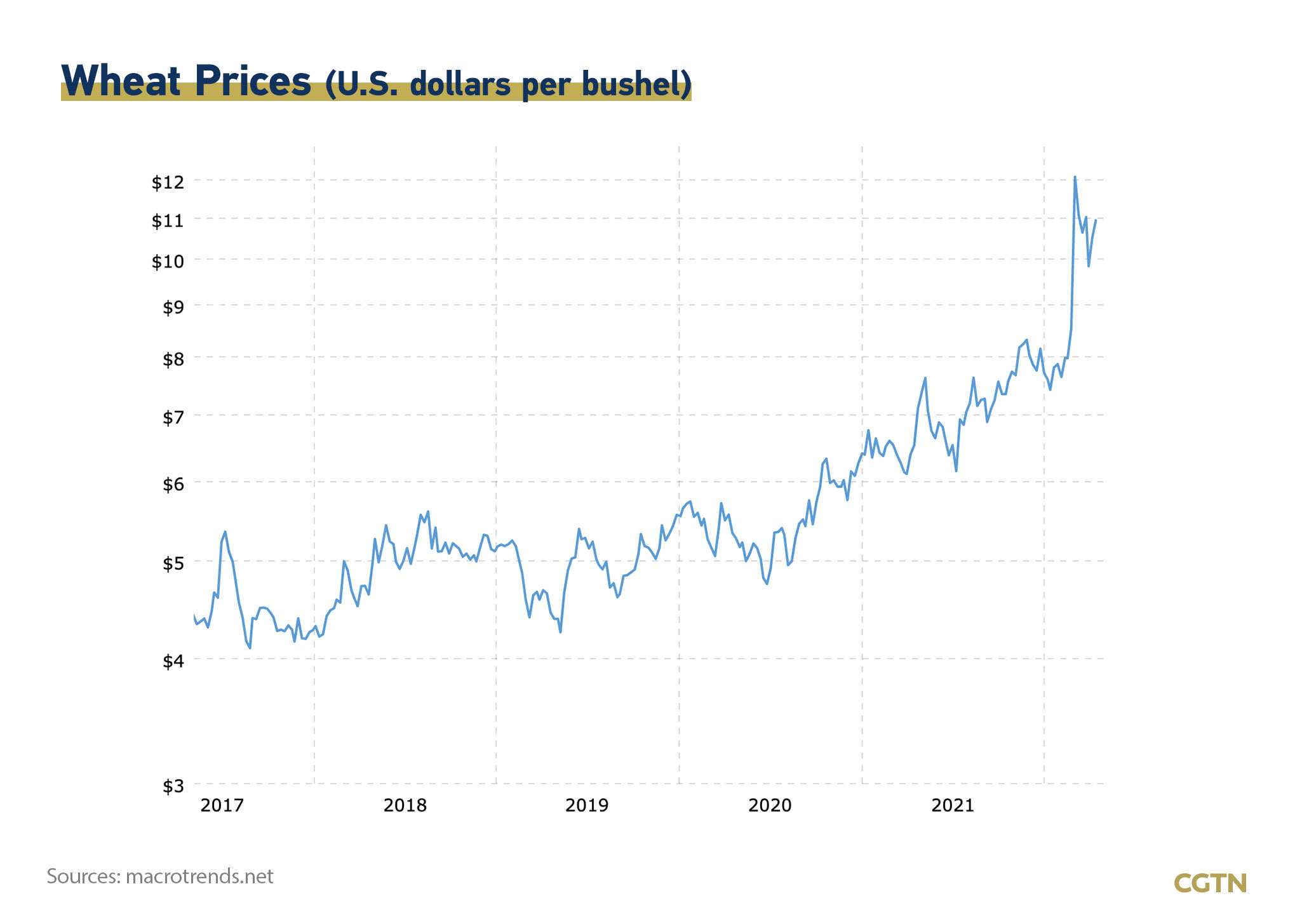
Director of the Lev agricultural firm Vitalii Lupynos wears a bulletproof vest during crop sowing, 30 kilometers from the front line in the Zaporizhzhia Region of southeastern Ukraine, April 8, 2020./CFP
Director of the Lev agricultural firm Vitalii Lupynos wears a bulletproof vest during crop sowing, 30 kilometers from the front line in the Zaporizhzhia Region of southeastern Ukraine, April 8, 2020./CFP
The world is facing crisis upon crisis, Kristalina Georgieva, head of the International Monetary Fund (IMF), said at this year's spring meeting over the weekend, noting that in addition to the pandemic and the Ukraine crisis, food insecurity is a grave concern.
Days before the meeting, the World Bank, IMF, UN World Food Programme, and World Trade Organization published a joint statement to call for urgent, coordinated action on food security, and appealed to countries to avoid banning food or fertilizer exports.
Russia and Ukraine are pivotal sources of agricultural commodities globally, according to a study released by the UN's Food and Agriculture Organization (FAO) in March.

Source: UN's Food and Agriculture Organization (FAO).
Source: UN's Food and Agriculture Organization (FAO).
The study said that both Russia and Ukraine ranked among the top three global exporters of wheat, maize, rapeseed, sunflower seeds, and sunflower oil, while Russia was also the world's top exporter of nitrogen fertilizers, the second leading supplier of potassium fertilizers and the third-largest exporter of phosphorous fertilizers.
The crisis between the two countries, which started in late February and still shows no sign of ending, has interrupted the traditional crop sowing in spring.
In an interview with CGTN in early April, Ukraine's Minister of Agrarian Policy and Food Mykola Solskyi said the conflict had greatly influenced the sowing season.
"Part of the land can't be sowed. And in the parts used for sowing we lack materials such as herbicides, fuel, and chemical products," he said.
Logistics is another problem. Solskyi said that blockaded ports have made export difficult, "so the harvest will be much smaller than before and that will have a negative impact on the global food and grain markets."

Food and energy prices, along with supply chain issues, continue to push up inflation, and international energy and grain prices will fluctuate violently, Joe Perry, an analyst with GAIN Capital, said in a note, pointing out that during the Crimean crisis in 2014, international wheat prices rose 20 percent.
"The threat is highest for the poorest countries with a large share of consumption from food imports, but vulnerability is increasing rapidly in middle-income countries, which host the majority of the world's poor," added the four organizations' joint statement.
World Bank estimates have warned that for each increase in food prices by one percentage point, 10 million people are thrown into extreme poverty worldwide.
Many of the countries heavily dependent on food imports are in the Middle East and Africa and some of them have taken action, according to the FAO's research.
From 2016 to 2020, Ukraine's largest markets for wheat and maize exports were Egypt, Indonesia, Bangladesh, Philippines, and Morocco while for Russian exports of the same commodities it was Egypt, Turkey, Bangladesh, Sudan, and Nigeria, according to data from UN.
Egypt announced in March that it was banning the export of key staples, including flour, lentils, and wheat in the following three months to safeguard its food reserves.
International organizations are drawing up plans to help affected countries cope with skyrocketing food prices with aid programs but the supply gap cannot be filled at once.
"It will be impossible for other countries to cover the [supply] gap if both countries [Ukraine and Russia] don't produce next year," FAO Chief Economist Maximo Torero said in an online press briefing last month.

